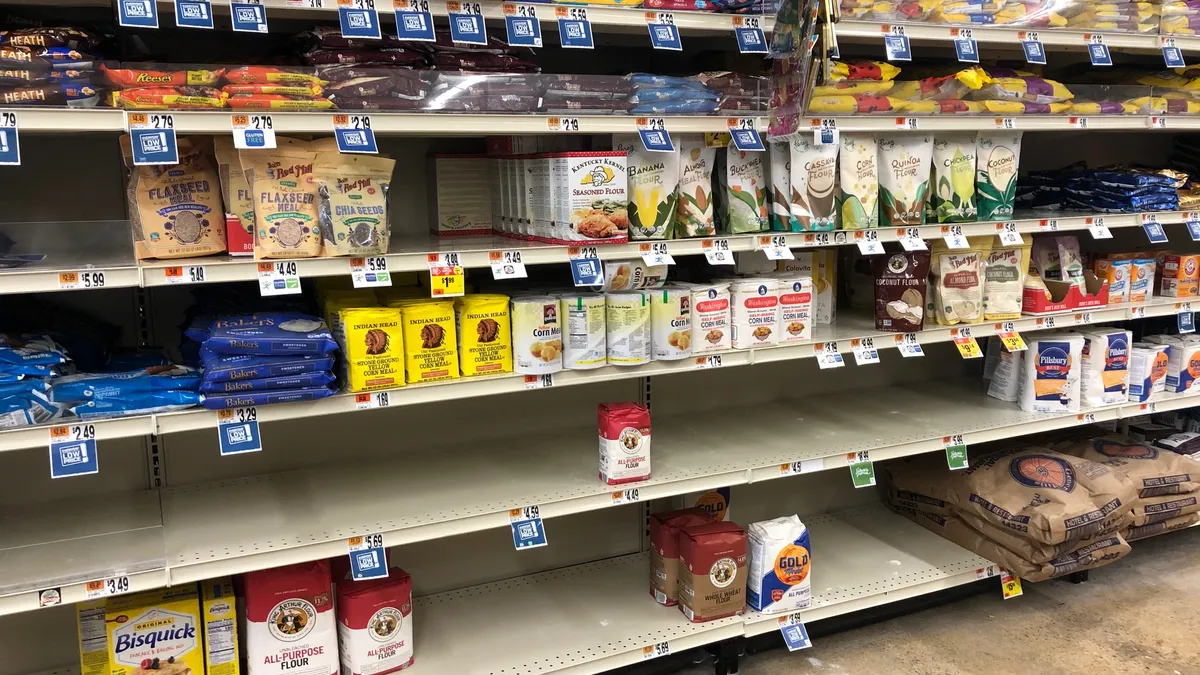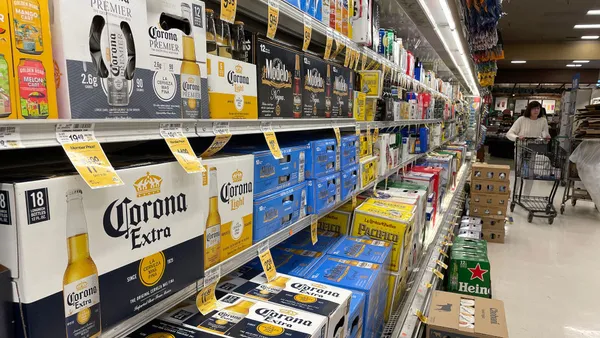Dive Brief:
- More than eight in 10 consumers purchased a different brand from the one they normally purchase in the past three months, according to new research from Inmar Intelligence sent to sister site Food Dive. Lower prices of substitute brands influenced this decision for more than 65% of shoppers while out-of-stocks for the original brand motivated 51% to make a switch.
- About 65% of consumers have switched brands "often" or "very often" in the past three months, the survey found. Among shoppers who made a switch, 44% said they would repurchase the new brand even if the original preferred brand was available again, while 36% would return to the original brand.
- The CPG supply chain has been wracked by labor and ingredient shortages, shipping delays and fuel price increases, which has left many store shelves with insufficient inventory. Meanwhile, manufacturers have been passing along higher costs to the end consumer, who appears to be taking note and shifting their shopping behavior.
Dive Insight:
Overall, food prices rose 3.4% in July compared to the previous year, according to the U.S. Bureau of Labor Statistics. And consumers are noticing: Over 84% of the Inmar survey's respondents said they noticed an increase in prices for groceries and household items that they regularly purchase. And 78% said this has made them consider alternative brands.
Brand switching is especially apparent in categories like dry grocery goods (crackers, cookies and cereals), where nearly 66% of consumers have opted for alternate brands, according to Inmar. Cereal manufacturers have seen a wave of demand as consumers committed to breakfast at home during the pandemic, which has triggered out-of-stocks for several brands. Frozen foods (55%), nonalcoholic beverages (46%) and alcohol (42%) round out the list of categories where the most consumers have bought different brands than they usually purchase.
As large manufacturers work to get on top of out-of-stocks, smaller brands have made themselves attractive to shoppers. In 2020, private label and smaller CPGs gained more than $12 billion in sales and picked up share in alcohol, frozen and center-store food categories as large companies struggled with supply and demand, according to IRI.
Once consumers switch, it can be tough for manufacturers to win them back, Inmar data shows. According to the survey, to motivate customers to return to the original brand, the manufacturer must convince them of its higher quality. Considering that a majority of shoppers have faced out-of-stocks and been forced to switch brands in recent months, making this sell will be difficult. When a desired brand does become available, it will likely be more expensive.
Several retailers, including Amazon, Target and Publix, have ramped up their grocery private label during the pandemic. Earlier this year, Kroger reported strong private label sales, while Albertsons said the increasing penetration of its own brands is expected to reach 30% in the coming years.













